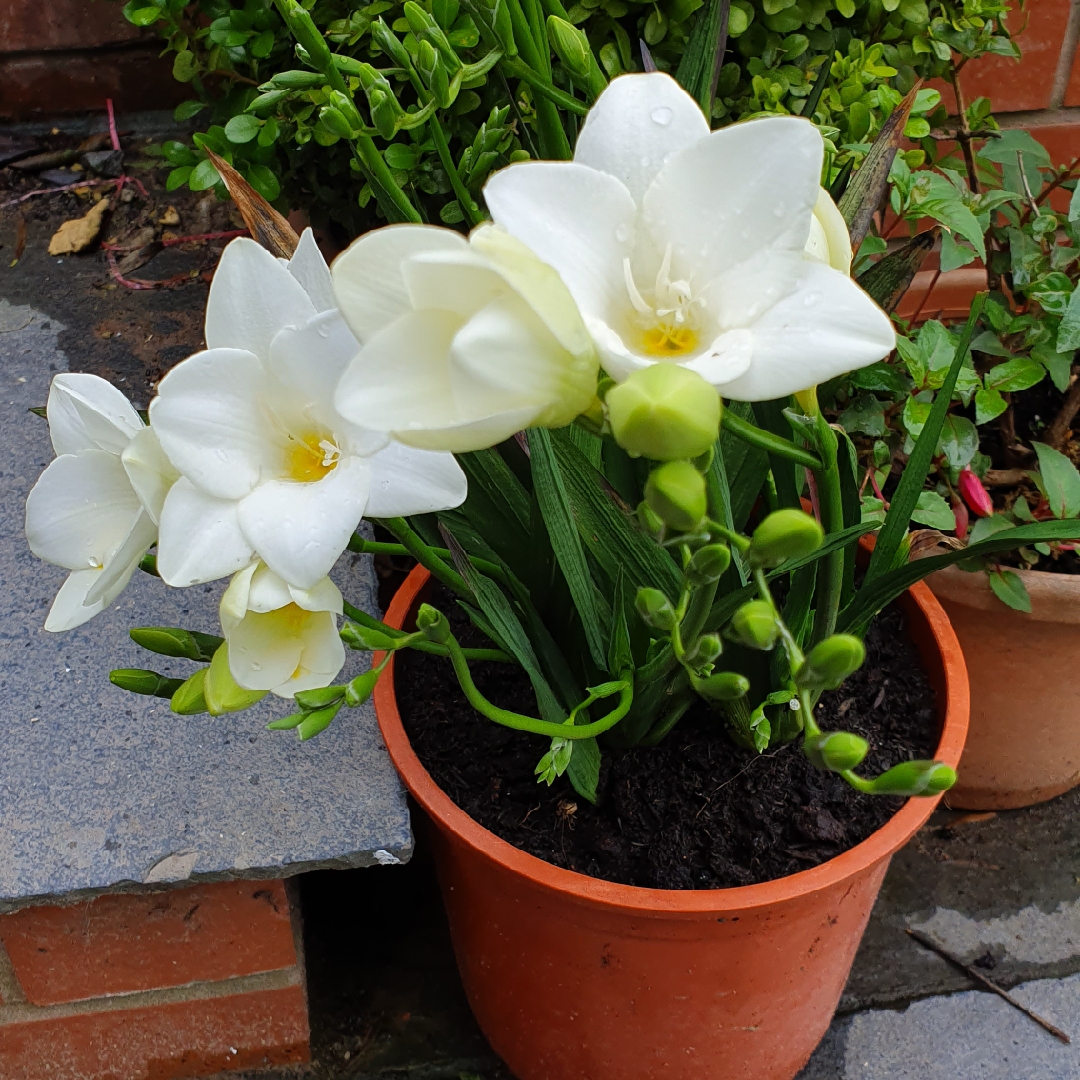
Freesia leichtlinii subsp. alba syn. Freesia alba
Freesia (Species) Antique White Freesia
Freesia are native to South Africa, but can be grown in cooler climes, either indoors or, in mild Winter areas, outdoors. The leaves are narrow, ribbed sword-shaped, and the very fragrant Freesia leichtlinii subsp. alba produces white flowers with often a purple flush and yellow markings and are upward-facing and “zygomorphic” (meaning that they grow along one side of the stem, in a single plane).
-
Full sun to partial shade
-
Very little water
-
Not Frost hardy
-
Free draining and fertile
Common name
Freesia (Species) Antique White Freesia
Latin name
Freesia leichtlinii subsp. alba syn. Freesia alba
type
Flowering corms
family
Iridaceae
ph
6.0 - 7.5 Acid - Neutral
Plant & bloom calendar
-
Best time to plant
-
When the plant will bloom
full grown dimensions
 0.35 M
0.40 M
0.35 M
0.40 M
Freesia leichtlinii subsp. alba syn. Freesia alba
Freesia are native to South Africa, but can be grown in cooler climes, either indoors or, in mild Winter areas, outdoors. The leaves are narrow, ribbed sword-shaped, and the very fragrant Freesia leichtlinii subsp. alba produces white flowers with often a purple flush and yellow markings and are upward-facing and “zygomorphic” (meaning that they grow along one side of the stem, in a single plane).
Flowering
From Mid Summer TO Late Summer
Freesias very fragrant,upward facing, zygomorphic flowers (i.e. all flowers growing on one side of the stem) appear from mid Summer to late Summer
Planting prepared corms
From Early Spring TO Mid Spring
Prepared corms are corms that have been treated with heat to imitate the South African growing pattern, where they would grow after a dormancy period through the heat of Summer. Prepared corms are available for planting in Spring for blooming in mid Summer to late Summer - for one season only. Plant 5cm (2in) deep in moderately fertile, well-draining soil in a sheltered, sunny site..
Planting unprepared corms
From Late Summer TO Early Autumn
Unprepared corms (i.e. corms that have not been heat-treated to imitate the South African growing-cycle) can be planted outdoors in late Summer to early Autumn in mild-Winter areas that have very little frost. Plant 5cm (2in) deep in moderately fertile, well-draining soil in a sheltered, sunny site.These corms can stay in-situ to flower in Spring the following year.
Propagation by offsets
From Early Spring TO Mid Spring
Freesias are usually propagated by off-sets. In cool-climate areas, corms will need to be lifted in the mid Autumn to overwinter. Any off-sets attached to the lifted corms can be separated from the parent in the Spring, and re-planted when the parent corms are re-planted.
Propagating
From Early Spring TO Late Winter
Freesias can be grown from seed, but may not flowers for a few seasons. Soak the seed with warm water for 24 hours to soften the hard seed coat before sowing. Germinate in the dark at 13-18°C (55-64°F) in pots covered with tin-foil. Seeds may take several months to germinate. Pot the seedlings individually, and keep them moist - don’t allow them to dry out - and grow them on at a temperature of at least 5 deg.C (41 deg. F) and no higher than 10 deg.C















